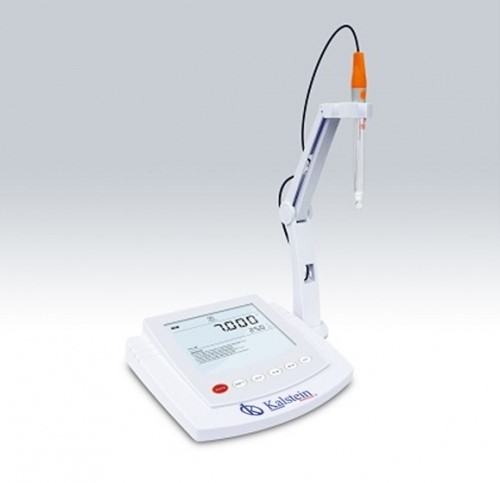The measurement of pH (hydrogen potential) in the laboratory is one of the most important parameters that are performed for quality control and, according to specialists in the field, it is the second most important after temperature. The determination of the pH has a great field of application: research, industry, teaching, among others. In laboratories where it is relevant to know the potential of hydrogen, a pH measuring device will always be found as a primary instrument.
For the correct measurement of this parameter, it is necessary to select the optimal laboratory equipment, so it is very important to take into account the following aspects:
- Measurement equipment.
- Type and quantity of sample to be analyzed.
- Electrode selection.
- Reagents necessary for equipment calibration (buffer solution).
What is a pH meter?
It is a scientific instrument that measures the activity of the hydrogen ion in aqueous solutions, indicating its degree of acidity or alkalinity expressed as pH. The pH meter measures the difference in electrical potential between a pH electrode and a reference electrode. This difference in electrical potential is related to the acidity or the pH of the solution. The pH meter is used in many applications ranging from laboratory experimentation to quality control.
There are general maintenance techniques for pH meters, but on many occasions each brand and each model has its own care. We will have to follow the instructions of the meter manufacturer to be able to enjoy it for a longer time.
The most important thing is to define from the beginning what need to be covered, and what will be the utility for which the pH meter is required. Once defined, the instrument that best suits the work to be performed is chosen.
What are the values of the pH scale
The pH scale, used only in aqueous solutions, usually varies between 1 and 14, for example, pure water, which is a neutral solution, has a pH of 7. Below this value we would find that we have a solution acid, and above this we would be talking about a basic or alkaline solution, which is also known as liquids with an alkaline pH.
This value can be understood taking into account that the water is ionized, that is, decomposed into the H + ions or protons, although more correctly we should talk about hydronium ions H3O + – and hydroxyl OH. Nowadays it is essential to know its value, in all industrial and service sectors, such as food, textiles, paper, the environment, or chemistry in general,
What considerations should you take into account when using a pH meter?
- Always read the instruction manual before using. We must not forget that although the instructions can be boring, they will generally answer the questions we have about the correct use and care of the pH meter, thus achieving a more lasting and fruitful life for ours.
- Always ensure that the pH meter has been calibrated correctly.
- If the handheld meter includes a storage solution in the lid, store the meter in an upright position for the most efficient saturation.
In Kalstein we have products manufactured with the latest technology, to be able to determine the pH accurately in laboratory techniques. These adapt to the needs of our customers, and we have a specific range of portable pH meters, desktop pH meters and pocket pH meters. That’s why we invite you to take a look HERE

